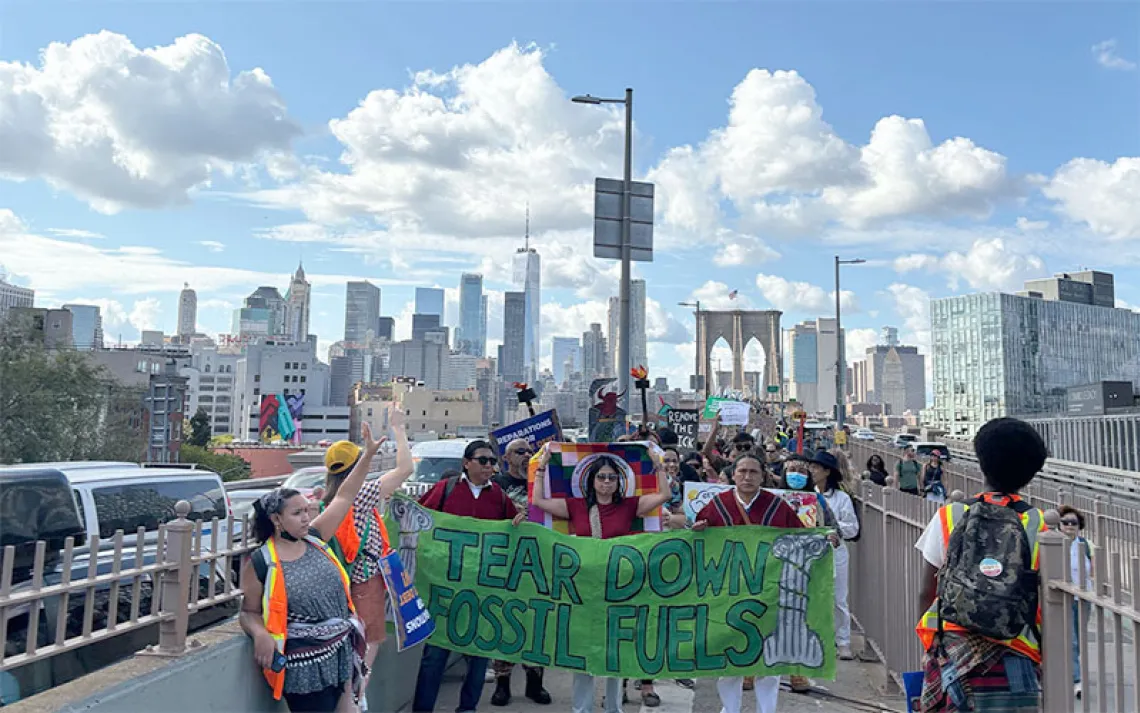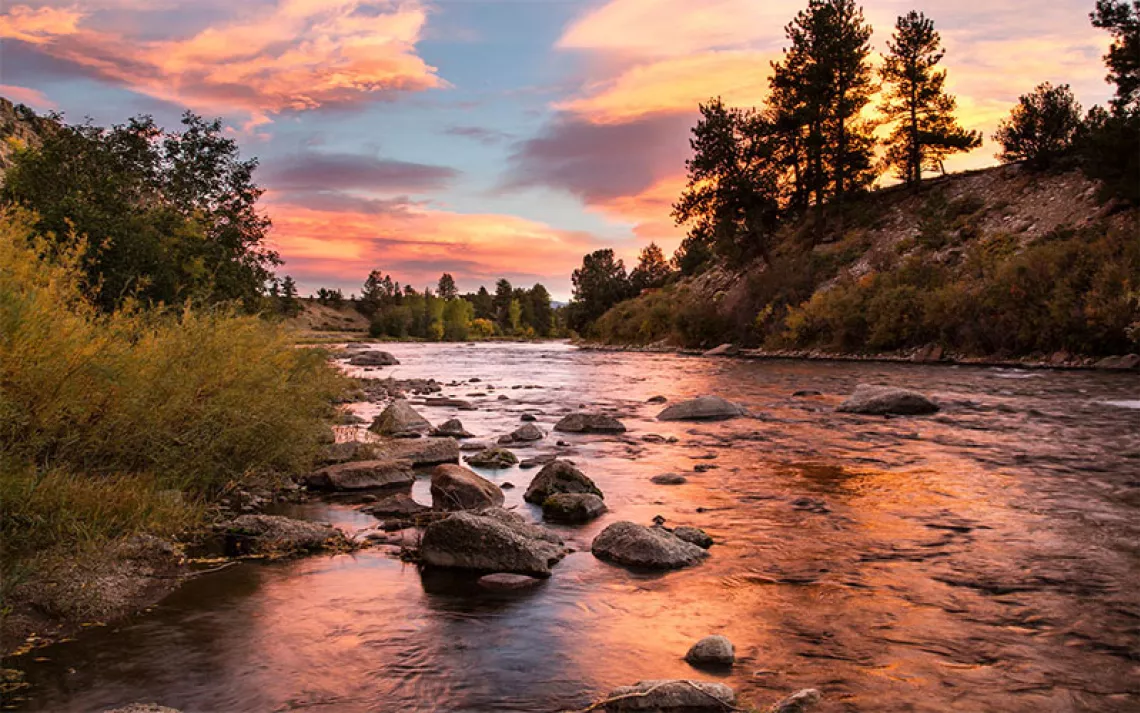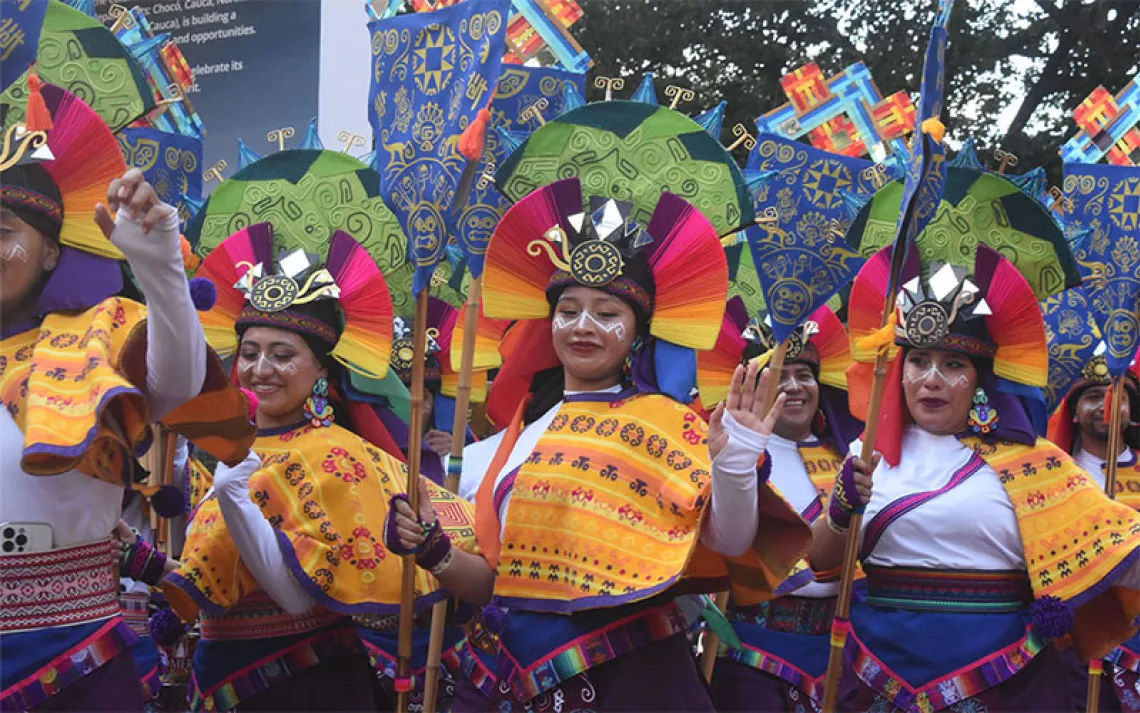Striking Down Roe v. Wade Leaves Native Women and Girls Even More Vulnerable
Commemorating missing and murdered Indigenous women and girls also means upholding our sovereignty

Photo by Sam Wasson/Sipa USA (Sipa via AP Images)
In 2018, the US Senate approved a resolution designating May 5 as the National Day of Awareness for Missing and Murdered Indigenous Women and Girls. During this year’s week of events for missing and murdered Indigenous women and girls, two-spirits, and transgender people taking place across the country, Justice Samuel Alito’s draft decision was leaked.
The Supreme Court draft was written following a preliminary vote in which a majority of conservative justices sided with Alito to strike down Roe v. Wade. Overnight, women and girls across the country were faced with losing the right to an abortion and control over their bodies by the end of the year. This after 50 years of Roe v. Wade being regarded as settled law and three of these justices (Neil Gorsuch, Amy Coney Barrett, and Brett Kavanaugh) promising in their confirmation hearings to respect it as such.
It is estimated that abortion will be outlawed in half the states of the Union. Many states have trigger laws already in place in case the Supreme Court makes just such a ruling. Many of these states include laws that will not allow terminating a pregnancy, even in cases of rape and incest. This follows upon SCOTUS allowing a Texas law to stand that restricts the procedure to the first six weeks. Although the justices opined that providers had the right to sue in federal court, it still effectively closed clinics’ doors throughout the state. The legislation, S.B. 9, also uses tort law in an unusual way by allowing private citizens, even those living outside Texas, to sue a person they “reasonably believed” provided an illegal abortion or assisted someone in getting it in the state.
All of this brings to mind dystopic futures depicted on TV shows like The Handmaid’s Tale. And South Dakota, 2006.
South Dakota, 2006
That year, the state legislature outlawed access to abortions, shutting down the only Planned Parenthood clinic in the state. Cecelia Fire Thunder, the first woman to become president of the Oglala Sioux Tribe and a former nurse and health-care giver, was incensed.
“To me, it is now a question of sovereignty,” she told the Lakota journalist Tim Giago. “I will personally establish a Planned Parenthood clinic on my own land, which is within the boundaries of the Pine Ridge Reservation where the State of South Dakota has absolutely no jurisdiction.”
I wrote about this at the time in my blog TiyospayeNow (Tiyospaye is the Dakota word for a family encampment of tipis) in a post titled “Fire Thunder Impeachment and the Rights of Women.” For her strong stance to protect a woman’s right to choose, President Fire Thunder was impeached by the majority-male Oglala Sioux Tribal Council and removed from office. In addition, the council passed an anti-abortion law even more stringent than that of South Dakota, banishing from the reservation anyone seeking or helping someone obtain an abortion. I don’t know if the law was ever enforced, but it sent a clear message.
An excellent PBS Independent Lens documentary that gives an on-the-ground viewpoint of what happened in 2006 when Fire Thunder was impeached is Young Lakota. The film features Sunny Clifford, a young Oglala college student who admires her tribe’s president and looks up to her as a mentor and even a lifeline.
"I never really experienced anybody talking about women’s rights and what they deserve,” she tells the filmmakers. “I used to have pity for myself because I’m a woman and Native American too. I’m at the bottom of the bottom. Cecelia gave me a feeling of like, you’re not at the bottom. You are someone who deserves to be respected and treated right.”
"When you stand in the middle of that community of craziness,” Cecelia counsels her, “you have to be real clear about who you are and what you believe in because they’re going to come at you from all different directions. No matter what they do—guess what, you’re still going to stay standing because you believe in who you are, and you believe in what you stand for.”
Meanwhile, South Dakota voters stood up to their legislators and rejected the 2006 anti-abortion law HB 1215, voting 185,945 to 148,648 against it. Two years later, once again, South Dakotans voted down another bill by a similar margin. But a 2005 sleeper bill (HB 1249) had already been passed by the state legislature, making it a class 6 felony to provide an abortion. The law would be triggered only when “states are recognized by the United States Supreme Court to have the authority to prohibit abortion at all stages of pregnancy.”
In the documentary, Sunny and other young Lakota women are being lectured to by a Native man. He tells them, “If we want to solve problems that cause beautiful young women to disrespect themselves, building a building so that they can come and learn about sex is not going to solve the problem.”
“The center, though, is not just a place to pass out condoms,” she boldly tells him in front of the crowd gathered around. “It’s actually an educational center, and we’ll offer mental health services to women who have been victims of rape and incest.”
Poverty and striking down Roe v. Wade
This is how the issue of missing and murdered Indigenous women and girls is related to the right to choose what happens to one’s body and to choose one’s own future, even if one has a womb. Women denied an abortion have a greater chance of falling into poverty.
"We have evidence that for women who delayed becoming mothers, because they had access to abortion—those women were much more likely to attend college, to graduate college, to obtain occupations that are kind of professional in nature,” Caitlin Myers, an economics professor at Middlebury College told NPR’s Marketplace. “And they had higher wages by as much as about 10 percent. And they were about half as likely to live in poverty as adults.”
In Young Lakota, Sunny reads from a newspaper article at her job at a convenience store on the Pine Ridge Reservation. “Life expectancy is four years less than the overall US population, here on the reservation, and the death rates are 670 percent higher.” Certainly, impoverished communities like those on the reservation will feel the added burden of striking down Roe v. Wade. In Southern states, most abortions were sought by Black and minorities who most likely lack the resources of wealthier white women and girls to travel to receive an abortion in another state. And a study done by the Native American Women’s Health Education Resource Center found that in the 21 years with adequate record-keeping, only 25 abortions were performed or funded by the Indian Health Service. The IHS is federally funded and must comply with the Hyde Amendment, which forbids the use of federal funds for abortion services, except when a woman’s life is at risk or (after a 1997 amendment) rape or incest. So, most Native women and girls, even those living on reservations, are most likely seeking care in off-reservation facilities subject to state laws if they can afford it.
“Unfortunately, there has been no improvement to access through the Indian Health Service,” Charon Asetoyer, NAWHERC CEO, told me. “We fought like crazy to get Plan B emergency contraceptive as over-the-counter within the IHS system. Came across a lot of conservative attitudes in the upper echelon of Health and Human Services, which oversees IHS. As long as a lot of right-wing conservative administrators are in control, I think abortion within IHS facilities is off the table.”
Ancient history and inequality
In 2006, I wrote in a state of outrage over the Oglala Sioux Tribe’s one-upmanship of the State of South Dakota in conservative politics concerning a woman's and a girl’s body and their right to choose. I recalled a story told to me by my Lala (my grandmother’s cousin Phil Lane Sr.). He told me that when he was a boy on the Standing Rock Sioux Reservation, there was an elder who would freely admit she was a “killed child.” It was such a shame that most would never admit to it. The Lakota and Dakota people have traditions of honoring children with a ceremony that makes the child a “child beloved” and gives them the right to wear their hair part painted red for the rest of their lives. A great giveaway is done in the child’s name, and the child is dressed in the finest beaded clothing. Even the bottoms of their moccasins are beaded. Being a “killed child” is, in many ways, the exact opposite. My Lala told me that in traditional Lakota society, men were supposed to control their sex drive (that this was considered the ultimate sign of manliness). And that couples were expected to space their children four years apart. For a people on the move, it was difficult to manage a lot of small children simultaneously, and having them too close together endangered the life of the older child. If they did not, the tribe would shame the couple by claiming they had not wanted the older child and sought to replace them by having a child too soon. Hence, the older child would be called a “killed child.”
In Young Lakota, Cecelia mentions that Lakota women’s reproduction was considered a private matter, and women had medicines that would help them with unwanted pregnancies.
In his draft decision, Justice Alito makes much of the idea that abortions are not “deeply rooted” in American law. He cites Sir Edward Cooke from 1644, before the country existed, who wrote that abortion was a crime but who also believed in witches. He then quotes another witch hunter, Sir Matthew Hale, who noted that if a physician gave a woman “with child” a “potion” to cause an abortion and the woman died, it was “murder” because the potion was given “unlawfully to destroy her child within her.” Hale also used absurd tests for witchcraft that would not be acceptable in a court of law today.
Granted, this could be seen as being part of English Common Law, but his citations should at least get his law clerk fired. But it also reveals the ancient and disreputable framework behind this 21st century legal draft decision that would force a girl as young as 12 or 13 to bear the child of a violent assault even from her father or a grown woman to be sacrificed in the case that it endangers her life.
Native people from North America have been questioning these “laws” since the 17th century as well in published accounts. Shouldn’t our ancestors’ perspectives be considered equally as those found on a small island off the coast of France? After all, our ancestors lived here in this hemisphere, the lands presently claimed by America. In Baron de Lahontan’s Nouveux Voyages dans L’Amerique Septentrionale, (published in English in 1703 as New Voyages to North America), the Baron writes, in one passage on "Hunting Women" who "will not hear of a Husband,"
To justify their Conduct, they alledge that they find themselves to be of too indifferent a temper to brook the Conjugal yoak, to be too careless for the bringing up of Children, and too impatient to bear the passing of the whole Winter in the Villages.… Their Parents or Relations dare not censure their Vicious Conduct; on the contrary they seem to approve of it, in declaring, as I said before, that their Daughters have the command of their own Bodies and may dispose of their Persons as they think fit.
The Jesuits do their utmost to prevent the Lewd Practices of these Whores, by preaching to their parents that their Indulgence is very disagreeable to the Great Spirit, that they must answer before God for not confineing their Children to the measures of Continency and Chastity, and that a Fire is Kindled in the other World to Torment ’em for ever, unless they take more care to correct Vice. To such Remonstances the Men reply, That’s Admirable; and the Woman usually tell the Good Fathers in a deriding way, That if their Threats be well grounded, the Mountains of the other World must consist of the Ashes of souls.”
I ask you: How have things changed in more than 400 years? Have they changed at all?
I find myself ending this article, written 16 years later, with the same two paragraphs. I suppose I have not changed at all, either:
There was a certain pragmatism to the old Lakota/Dakota traditions perceptible in the harsh community condemnation of parents who bore children too close together. It is obvious that they valued the life that already exists more than that might be. That they held self-evident that parents and the community should do everything in their power to ensure the well-being of the children who already exist to not only survive but thrive. How is the Oglala Nation doing this today if they do not value the lives and potentiality of their women? Why are they willing to create a generation of "killed women"? Even of "killed children" as many of these young women are little more than children themselves? I am a mother, and I am raising two children. The effort and daily investment in each child is great even after only six years of motherhood. I value my children, and as such, I value their potential. I would never demand my daughter, as a teenager, bear a child of rape or incest. It would be devaluing her. It would be "killing" her because I am forcing into life another life before the present is able to bear it. This was something that our ancestors understood. Perhaps better than we do now.
And if we create a society of our own, now, today that we love and enjoy and raise children who are beautiful and safe from harm, are we not truly then following in our ancestors' footsteps? Isn’t that really the kind of society they would have understood and valued? Isn’t that, after all, what they had hoped and prayed for in those tumultuous last days before the hoop was broken?
 The Magazine of The Sierra Club
The Magazine of The Sierra Club



